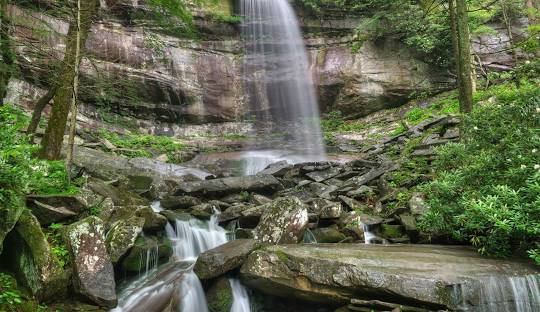Discovering Hawaii: A Guide for Visitors
Exploring the Beauty of Hawaii: A Guide for Visitors
Hawaii, known for its stunning landscapes, rich culture, and warm hospitality, is a top destination for travelers seeking a tropical paradise. Whether you’re a first-time visitor or a seasoned traveler to the islands, there is always something new and exciting to discover in Hawaii.
Must-See Attractions
From the lush rainforests of Kauai to the volcanic landscapes of the Big Island, Hawaii offers a diverse range of attractions for visitors to explore. Don’t miss iconic sites such as Waikiki Beach on Oahu, Haleakala National Park on Maui, and the Napali Coast on Kauai.
Immersive Cultural Experiences
Immerse yourself in Hawaiian culture by attending a traditional luau, learning about ancient Hawaiian traditions at cultural sites like Pu’uhonua o Honaunau National Historical Park, or taking part in a hula dance workshop. Engaging with local culture is an essential part of any visit to Hawaii.
Outdoor Adventures
For outdoor enthusiasts, Hawaii offers endless opportunities for adventure. Hike through lush valleys and along rugged coastlines, snorkel in crystal-clear waters teeming with marine life, or try your hand at surfing on world-renowned waves. The islands are a playground for nature lovers.
Culinary Delights
Hawaii’s culinary scene is as diverse as its landscape. Sample fresh seafood at local fish markets, indulge in traditional Hawaiian dishes like poke and laulau, or treat yourself to gourmet dining at one of the many upscale restaurants scattered across the islands. Don’t forget to try shave ice for a refreshing treat!
Planning Your Trip
When planning your trip to Hawaii, be sure to research each island’s unique offerings and attractions to tailor your experience to your interests. Consider booking guided tours or activities to make the most of your time on the islands and gain insights from knowledgeable local guides.
Whether you’re seeking relaxation on pristine beaches or adventure in the great outdoors, Hawaii has something for every type of traveler. So pack your bags and get ready to explore the beauty of Hawaii!
8 Essential Tips for Visitors to Hawaii: Embrace Culture, Protect Nature, and Enjoy the Aloha Spirit
- Respect the local culture and traditions.
- Protect the environment by practicing responsible tourism.
- Be mindful of your carbon footprint and try to reduce waste.
- Learn about the history and significance of the places you visit.
- Support local businesses and artisans to contribute to the community.
- Stay safe by following beach safety guidelines and respecting wildlife.
- Dress appropriately when visiting sacred sites or attending cultural events.
- Take time to relax and enjoy the natural beauty of Hawaii.
Respect the local culture and traditions.
When visiting Hawaii, it is essential to respect the local culture and traditions. Hawaiians have a deep connection to their land, history, and customs, and by showing reverence for their way of life, visitors can create meaningful interactions and experiences. Embrace the aloha spirit by learning about Hawaiian traditions, participating in cultural activities, and treating the land and its people with care and respect. By honoring the local culture, visitors can truly immerse themselves in the beauty of Hawaii and forge genuine connections with the community.
Protect the environment by practicing responsible tourism.
Protecting the environment is crucial when visiting Hawaii, and practicing responsible tourism is key to preserving the islands’ natural beauty for future generations. By being mindful of your impact on the environment, such as reducing waste, respecting wildlife and marine life, and supporting eco-friendly businesses, you can help ensure that Hawaii remains a sustainable and vibrant destination for all visitors to enjoy. Let’s all do our part in protecting this precious paradise.
Be mindful of your carbon footprint and try to reduce waste.
When visiting Hawaii, it is important to be mindful of your carbon footprint and make an effort to reduce waste. By adopting eco-friendly practices such as using reusable water bottles, bags, and utensils, recycling whenever possible, and supporting businesses that prioritize sustainability, visitors can help protect the fragile ecosystems of the islands. Small actions like conserving water, respecting wildlife habitats, and choosing eco-friendly transportation options can make a big difference in preserving Hawaii’s natural beauty for future generations to enjoy. Let’s all do our part in keeping Hawaii clean and sustainable for years to come.
Learn about the history and significance of the places you visit.
When visiting Hawaii, it is essential to take the time to learn about the history and significance of the places you visit. Understanding the cultural background and historical context of each location not only enriches your experience but also fosters a deeper appreciation for the land and its people. By delving into the stories and traditions that have shaped Hawaii, visitors can gain a more profound connection to the islands and their vibrant heritage. Take the opportunity to learn from local guides, visit historical sites, and engage with the community to truly immerse yourself in the spirit of Aloha.
Support local businesses and artisans to contribute to the community.
When visiting Hawaii, it is important to support local businesses and artisans to contribute positively to the community. By purchasing goods and services from local shops, restaurants, and artisans, visitors can help sustain the local economy and preserve the unique culture of the islands. Shopping at local markets, dining at family-owned restaurants, and buying handmade crafts not only enriches your experience as a traveler but also directly benefits the people who call Hawaii home. Embracing and supporting local businesses is a meaningful way to give back to the community while enjoying all that Hawaii has to offer.
Stay safe by following beach safety guidelines and respecting wildlife.
To ensure a safe and enjoyable visit to Hawaii, it is crucial to adhere to beach safety guidelines and show respect for the local wildlife. Always swim at designated beaches with lifeguards on duty, obey posted warning signs, and be mindful of strong currents and changing weather conditions. Additionally, maintain a safe distance from marine animals such as sea turtles and monk seals, as they are protected species in Hawaii. By prioritizing safety and showing consideration for the environment and wildlife, visitors can have a memorable experience while preserving the natural beauty of the islands for future generations to enjoy.
Dress appropriately when visiting sacred sites or attending cultural events.
It is important to dress appropriately when visiting sacred sites or attending cultural events in Hawaii. Respect for the local culture and traditions is key, and dressing modestly shows reverence for the significance of these places and events. Consider wearing clothing that covers your shoulders and knees out of respect for Hawaiian customs. By dressing thoughtfully, you not only show your appreciation for the culture but also contribute to a more meaningful and respectful experience during your visit to these sacred sites and cultural events in Hawaii.
Take time to relax and enjoy the natural beauty of Hawaii.
Visitors to Hawaii are encouraged to take time to relax and fully immerse themselves in the natural beauty that the islands have to offer. From the vibrant colors of tropical flowers to the soothing sound of ocean waves, Hawaii’s landscapes provide the perfect backdrop for relaxation and rejuvenation. Whether lounging on a pristine beach, hiking through lush rainforests, or simply taking in a breathtaking sunset, slowing down and appreciating the serene beauty of Hawaii is an essential part of any visit to the islands.

